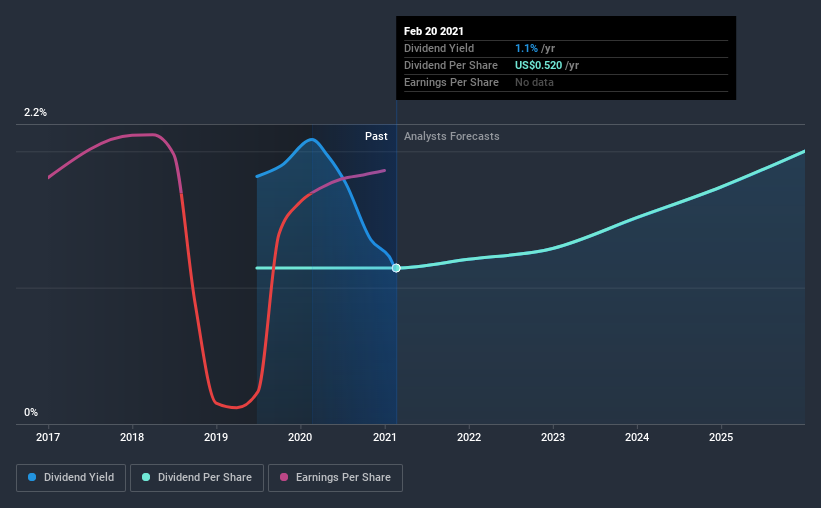Corteva, Inc. (NYSE:CTVA) Goes Ex-Dividend Soon
Some investors rely on dividends for growing their wealth, and if you're one of those dividend sleuths, you might be intrigued to know that Corteva, Inc. (NYSE:CTVA) is about to go ex-dividend in just four days. Investors can purchase shares before the 26th of February in order to be eligible for this dividend, which will be paid on the 15th of March.
Corteva's upcoming dividend is US$0.13 a share, following on from the last 12 months, when the company distributed a total of US$0.52 per share to shareholders. Looking at the last 12 months of distributions, Corteva has a trailing yield of approximately 1.1% on its current stock price of $45.47. We love seeing companies pay a dividend, but it's also important to be sure that laying the golden eggs isn't going to kill our golden goose! So we need to check whether the dividend payments are covered, and if earnings are growing.
See our latest analysis for Corteva
Dividends are usually paid out of company profits, so if a company pays out more than it earned then its dividend is usually at greater risk of being cut. Corteva is paying out an acceptable 53% of its profit, a common payout level among most companies. A useful secondary check can be to evaluate whether Corteva generated enough free cash flow to afford its dividend. The good news is it paid out just 24% of its free cash flow in the last year.
It's positive to see that Corteva's dividend is covered by both profits and cash flow, since this is generally a sign that the dividend is sustainable, and a lower payout ratio usually suggests a greater margin of safety before the dividend gets cut.
Click here to see the company's payout ratio, plus analyst estimates of its future dividends.
Have Earnings And Dividends Been Growing?
Businesses with strong growth prospects usually make the best dividend payers, because it's easier to grow dividends when earnings per share are improving. If earnings fall far enough, the company could be forced to cut its dividend. With that in mind, we're encouraged by the steady growth at Corteva, with earnings per share up 7.9% on average over the last five years. While earnings have been growing at a credible rate, the company is paying out a majority of its earnings to shareholders. If management lifts the payout ratio further, we'd take this as a tacit signal that the company's growth prospects are slowing.
Many investors will assess a company's dividend performance by evaluating how much the dividend payments have changed over time. It looks like the Corteva dividends are largely the same as they were two years ago.
To Sum It Up
Has Corteva got what it takes to maintain its dividend payments? Earnings per share growth has been modest and Corteva paid out over half of its profits and less than half of its free cash flow, although both payout ratios are within normal limits. All things considered, we are not particularly enthused about Corteva from a dividend perspective.
So while Corteva looks good from a dividend perspective, it's always worthwhile being up to date with the risks involved in this stock. Our analysis shows 1 warning sign for Corteva and you should be aware of it before buying any shares.
If you're in the market for dividend stocks, we recommend checking our list of top dividend stocks with a greater than 2% yield and an upcoming dividend.
This article by Simply Wall St is general in nature. It does not constitute a recommendation to buy or sell any stock, and does not take account of your objectives, or your financial situation. We aim to bring you long-term focused analysis driven by fundamental data. Note that our analysis may not factor in the latest price-sensitive company announcements or qualitative material. Simply Wall St has no position in any stocks mentioned.
Have feedback on this article? Concerned about the content? Get in touch with us directly. Alternatively, email editorial-team (at) simplywallst.com.

 Yahoo Finance
Yahoo Finance 
